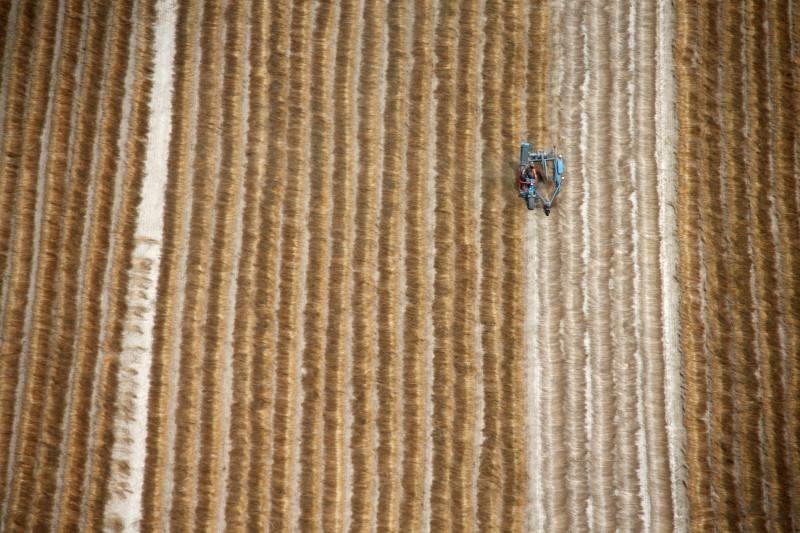PARIS (Reuters) - French farmers may reduce by half next year the area they devote to flax fibre, reversing a decade of growth for the crop used to make linen as the industry adjusts to a drop in textile demand due to the novel coronavirus epidemic.
France is the world's largest grower of flax fibre and part of a northwest European belt also covering Belgium and the Netherlands that accounts for over 80% of global supply of the crop.
"Growers have been advised to cut by half their flax fibre area next year to try and absorb the surplus," Sebastien Windsor, a farmer and president of French farming body APCA, told a videoconference on Wednesday.
A collapse in textile demand as shops and factories were shuttered as part of lockdown measures to curb the novel coronavirus means two-thirds of last year's French flax fibre crop has yet to be processed, industry group CIPALIN says.
It projects French farmers may sow two to three times less of the crop next year in an effort to rein in supply that could last until 2022.
That could cancel out all of the area growth seen in the past decade as French producers tapped into the niche for linen as a natural textile, mostly exporting the fibre to China for spinning.
French farmers sowed around 120,000 hectares of flax fibre in 2019 and were expected to expand their area further this year, although 2020 data is not yet available.
Spring drought that has parched northern French plains may also play a role in curbing supply by reducing harvest yields, Windsor added.
"This may help us come out of the crisis a bit more quickly. Consumption was stopped and now the weather is taking care of curbing production," he said.
